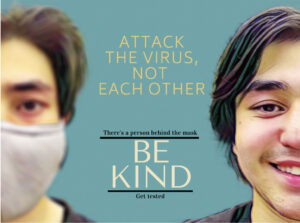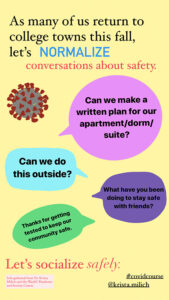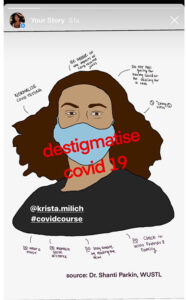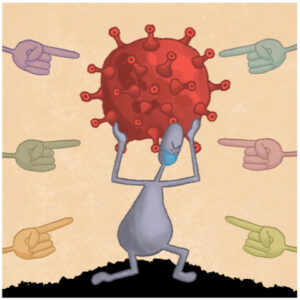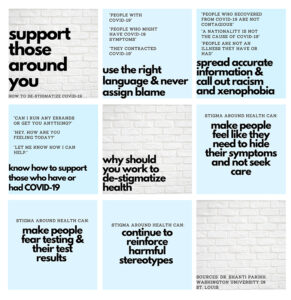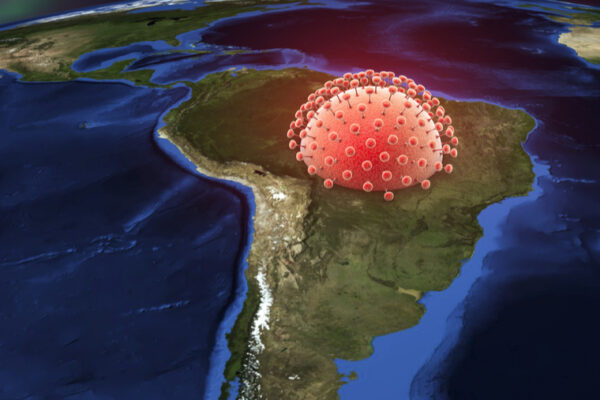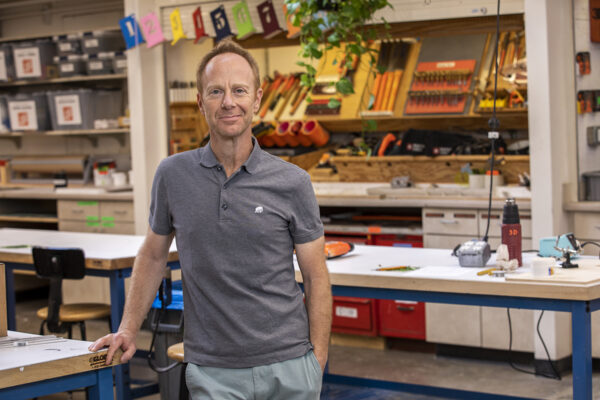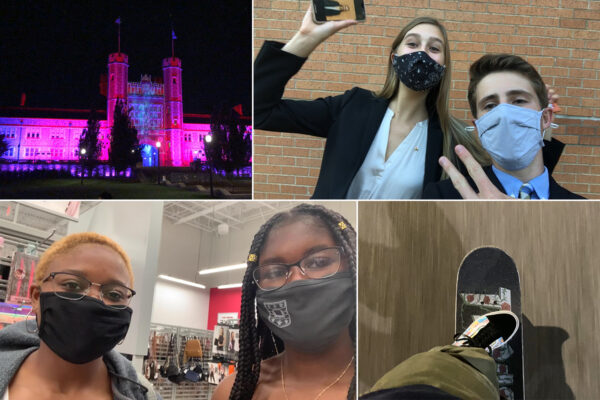Students of “The Pandemic: Science and Society” created artwork, graphics and social media posts communicating information about the virus and its impact.
After completing the three-week summer immersion course, “The Pandemic: Science and Society,” Washington University in St. Louis biology student Priya Mathur is better prepared for her future as a doctor.
And, no less important, her present as a college student.
“This class moved beyond the science to show me how the virus impacts and intersects with all aspects of society,” said Mathur, a junior. “I now have the tools to have important conversations about the virus with the people around me. My roommate and I have already discussed our rules for our apartment and ideas on how we can keep each other safe.”
Multiply those conversations by more than 1,200. That’s the number of students who enrolled in the online two-credit course, a university record by several factors. No one is more delighted by the course’s popularity than course designer Krista Milich, assistant professor of biological anthropology in Arts & Sciences and an expert on zoonotic diseases.
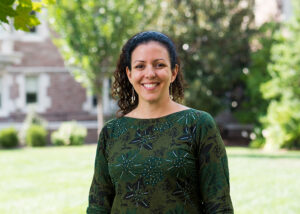
“I knew that every student who enrolled would help create a safer community on campus this semester,” Milich said. “From the speaker list to the assignments to the opportunity to engage with each other in discussion, the course was designed in a way to give them practical information about the virus, show them the suffering of others in the community and help them strategize ways to follow safety measures and take care of their mental health while creating connections with each other. I am heartened that our students not only learned those lessons, they are sharing them with others. The entire university is benefitting from their knowledge.”
As envisioned by Feng Sheng Hu, dean of the faculty of Arts & Sciences, the innovative course was unique in two ways — it featured not just Arts & Sciences faculty, but experts from across disciplines and across the country, and it welcomed students from all schools.
Speakers included David Wang at the School of Medicine on the science of the virus; Shanti Parikh in Arts & Sciences on cultural perspectives and the stigmas associated with the virus; Heather Bennett at the Sam Fox School on the pandemic’s impact on the arts; and Chancellor Andrew D. Martin on the virus’ impact on higher education. Others included Joshua Sharfstein of Johns Hopkins University on leadership and management; Jose-Luis Jimenez of University of Colorado, Boulder, on aerosol transmission; and journalist Ed Yong of The Atlantic on science communication. All of the lectures are available for view on the course site.
The class was free to all full-time students and ran from Aug. 17 to Sept. 4. The students viewed daily lectures, participated in discussion boards, completed quizzes and created four pieces of communication — a video, infographic, letter to the editor or work of art — about the virus. Students shared their work on social media platforms using using the hashtag #COVIDcourse.
“This course really highlights the heart of Arts & Sciences — immersive, interdisciplinary examinations of issues that impact our lives and our society,” Hu said. “The content, the guest speakers and the breadth of the course are exceptional, and feedback from students has been terrific. I’m proud that Krista, leading experts from WashU and other institutions, and our A&S community came together to make this course a success. I believe it will impact our school and our campus in countless ways.”
Jalen Bogard, a first-year student at Olin Business School, said the class opened his eyes to new disciplines. For his communication assignment, he wrote a collection of poems titled “The Voices of the Scorned.”
“For me, the gift of this class has been all of the new perspectives I hadn’t thought about before — how the virus is affecting Latinx immigrants and LGBT+ people and disabled people,” Bogard said. “I have gained an interest in women and gender studies, African American studies, even law. It’s bringing interests that I didn’t know I had to the surface.“
